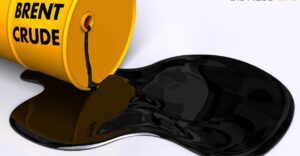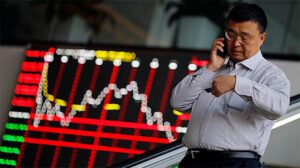
The demand for townhouses and cottages in Kyiv in September decreased by 60-100% since the beginning of the year, while prices in hryvnia equivalent increased by 75%, said Viktor Kovalenko, the director of the RealExpo consulting company.
According to a company study published by the zagorodna.com Internet portal, the cost per square meter in suburban real estate was affected by the growth of the dollar exchange rate and an increase in the cost of construction materials by 50%.
Most of all, the average price in January-September increased in the Solomiansky district – by 89.8% (up to UAH 50,400/sq m). In Holosiyivsky district, the price per square meter increased by an average of 75% (up to UAH 76,300/sq m), in Podilsky – by 67% (up to UAH 91,000/sq m).
According to the company, in the nine months of 2022, two new projects appeared on the suburban real estate market in Kyiv, while over the same period last year, the supply increased by 16 new projects.
At the same time, construction has been frozen in Kyiv at nine sites, which is about a third of the total number of cottage settlements under construction and projected, the study notes.
According to the developers of suburban real estate surveyed by the company, the demand for this type of housing has declined significantly, but developers report the presence of pent-up demand.
“Demand for cottages in Kyiv, according to the experts, has decreased by 60-100% since the beginning of the war, but it is gradually resuming. It was military operations in Kyiv and its environs, attacks that influenced and continue to influence the decline in demand for townhouses and cottages in Kyiv,” explained Kovalenko.

Quotes of futures for US stock indices began to decline sharply on Thursday after data from the US Department of Labor indicated only a slight slowdown in inflation in the United States.
Consumer prices (CPI index) in the US in the past month rose by 8.2% in annual terms, according to data from the country’s Department of Labor.
Thus, inflation in September slowed to a seven-month low compared to 8.3% in August, but was higher than the 8.1% expected by analysts polled by Bloomberg.
Meanwhile, the number of Americans who applied for unemployment benefits for the first time increased by 9 thousand last week and amounted to 228 thousand people, updating the maximum in a month and a half. Analysts on average had expected the figure to rise to 225K, according to Trading Economics.
In addition, investors are evaluating the quarterly reports of large companies, which mostly turned out to be better than Wall Street’s expectations.
Shares of Walgreens Boots Alliance are up 1.1%. The pharmacy chain recorded a decrease in revenue in the fourth financial quarter, but the figure exceeded analysts’ expectations.
Delta Air Lines is up 1.8%. One of the largest airlines in the United States in the third quarter received revenue that was better than the same period before the pandemic in 2019 and the market forecast.
Domino’s Pizza Inc stock quotes jumped 6.5%. The American chain of pizza restaurants in the third quarter of fiscal 2022 decreased net profit, but the revenue figure exceeded consensus forecasts.
The market value of BlackRock falls by 2.7%. The world’s largest company in terms of assets under management reduced its net profit in the third quarter by 16.4%, although the adjusted figure and revenue were better than experts’ expectations.
Capitalization of Applied Materials Inc. declined 4.3% after one of the world’s largest chip manufacturing equipment manufacturers downgraded its fiscal fourth quarter revenue guidance due to US trade restrictions blocking shipments of high-tech semiconductor components and manufacturing equipment to China.
The value of the December futures E-mini on the Dow Jones index by 15:35 CSK fell by 1.36% and amounted to 28864 points. The quotation of the December E-mini futures on the S&P 500 fell by this time by 1.82%, to 3523.25 points. Futures on the Nasdaq 100 for December fell 2.81% to 10,535.75 points.
Prior to the release of inflation data, all three futures were up more than 1%.

Oil prices began to rise moderately during trading on Thursday, recovering from the decline over the previous three sessions.
December futures for Brent on London’s ICE Futures exchange increased by $0.38 (0.41%) to $92.83 per barrel by 15:06 CST.
Quotes of futures for WTI for November in electronic trading on the New York Mercantile Exchange (NYMEX) by the specified time increased by $0.28 (0.32%) – up to $87.55 per barrel.
On Wednesday, Brent shed 2%, WTI – 2.3%, both brands finished in the red for the third session in a row.
Traders’ attention on Thursday is focused on the US Department of Energy’s report on energy stocks in the country over the past week, which will be published at 18:00 Moscow time on Thursday.
Experts polled by S&P Global Commodity Insights predict a weekly increase in US oil inventories by 2.2 million barrels, as well as a decrease in gasoline and distillate reserves by 2.1 million and 2.3 million barrels, respectively.
Data from the American Petroleum Institute (API), released yesterday, showed an increase in US oil inventories for the week ended October 7 by 7.1 million barrels after a decrease of 1.77 million barrels a week earlier.
Meanwhile, the International Energy Agency (IEA) on Wednesday lowered its 2022 oil demand growth forecast by 100,000 b/d to 99.6 million b/d. Thus, in 2022, the IEA expects global oil demand to grow by 1.9 million b/d against 2 million b/d a month earlier. The estimate of global oil demand in 2023 has been reduced from 101.8 million b/d to 101.3 million b/d.
The agency notes that the estimate of global demand has been adjusted due to the deterioration of the global economy, as well as rising fuel prices due to the adopted OPEC + plan to reduce production.
“Sustainable growth prospects are rapidly fading away amid persistent inflationary pressures, quantitative tightening, regular increases in borrowing costs, a strong dollar and coronavirus-related restrictions in China, the world’s second-largest economy,” said PVM analyst Tamas Varga.

As part of the Steel Front military initiative founded by Rinat Akhmetov, more than 2,000 drones and walkie-talkies, 700 cars and half a million liters of fuel were handed over to Ukrainian soldiers, the businessman’s press service told Interfax-Ukraine.
He also handed over to the Armed Forces of Ukraine more than 150,000 bulletproof vests produced at SCM enterprises. “For this, metallurgists have mastered the technology of smelting special armored steel of a high level of protection, and also found contractors who sew plate carriers,” the press service reports.
In addition to bulletproof vests, the soldiers also received other means of protection: more than 20,000 helmets and 40,000 first-aid kits produced in accordance with NATO standards. “Because this war is primarily a war of high technology, Akhmetov has directed millions to purchase cars, drones and walkie-talkies – this is what gives our soldiers an advantage at the front,” the text says.
More than 1,011 modern drones and 1,292 walkie-talkies, 1,600 special devices (thermal imagers, rangefinders) have already been handed over to the military. To ensure the mobility of the units, the SCM businesses handed over more than 700 vehicles to the front, primarily reliable off-road vehicles, and provided them with fuel. In total, 595,000 liters of fuel were sent to the needs of the Armed Forces of Ukraine and peaceful cities.
“We do not plan to stop and will do everything to bring Ukraine’s victory closer. And we will definitely win,” Akhmetov said.
As reported, since the beginning of the war, SCM companies have sent over UAH 3 billion to help Ukraine and Ukrainians, and this figure is growing every day.

Mining and metallurgical group “Metinvest” has carried out a number of reshuffles in its management, in particular, by expanding the area of responsibility of the general director of the Zaporizhzhya metallurgical plant “Zaporizhstal” Alexander Mironenko.
According to the official statement of the press service of the Metinvest group, in response to a corresponding request from the Interfax-Ukraine agency on Thursday, the changes in the organizational structure of Metinvest are due to the fact that the Russian military aggression against Ukraine led to the shutdown of the group’s enterprises in Mariupol and Avdiivka, the break sustainable technological and supply chains – both intragroup and external.
“In response to new challenges, Metinvest decided to change the organizational structure of the group, designed to improve the operating model of sales, logistics and purchases, to strengthen the company. Thus, the Commercial Directorate of the Metinvest Group was created on the basis of the Sales Directorate and the Logistics Directorate and procurement. Dmitry Nikolaenko headed the Commercial Directorate,” the response to the agency explains.
And it is added that the unification of the areas of logistics, sales and purchases and the creation of a single center for their coordination and management is aimed at the effective management of key cost processes in the company, at obtaining an additional effect from the synergy of these main functions and building an end-to-end process of their cross-functional interaction.
“The changes also affected the Operational Directorate of the Metinvest Group, which was headed by the General Director of Zaporizhstal Alexander Mironenko. He will also continue to act as the General Director of the joint venture of the Metinvest Group – the Zaporizhstal Combine,” the company’s information states.
At the same time, it is emphasized that the company seeks to maintain its human resources potential, therefore, all rotations and appointments to key positions are made by moving managers or combining roles, taking into account changes in the business configuration.
Zaporizhstal is one of the largest industrial enterprises in Ukraine, whose products are in great demand among consumers both in the domestic market and in many countries of the world. The plant specializes in high-quality hot-rolled steel coil, hot-rolled sheet, cold-rolled sheet, cold-rolled coil made of carbon and low-alloy steels, as well as steel strip, black tin, bent profile.
Zaporizhstal is in the process of integrating into the Metinvest group, the main shareholders of which are PJSC System Capital Management (71.24%) and the Smart Holding group of companies (23.76%).
Metinvest Holding LLC is the management company of the Metinvest group.

Stock indices of the Asia-Pacific region fall on Thursday, following the dynamics of the US stock market.
Investors are evaluating the minutes of the September meeting of the US Federal Reserve, which showed that the US Central Bank is expected to continue raising key rates and keep them high until inflation shows signs of slowing down.
Meanwhile, a number of representatives of the Fed’s leadership believe that in the face of uncertainty, it will be important to adjust the pace of further tightening of monetary policy in order to limit the risk of negative consequences for the economy, the protocol says.
The market is now waiting for the publication of US inflation data in September, which may indicate the effectiveness of the Fed’s policy. The Labor Department report is due Thursday at 3:30 p.m., and analysts on average expect U.S. consumer prices to rise 8.1% year-on-year last month after rising 8.3% a month earlier, according to Trading Economics.
The Hong Kong Hang Seng has lost 1% by 8:13 Moscow time, it is falling for the sixth trading in a row and is at its lowest level in the last 11 years. China’s Shanghai Composite, meanwhile, shed 0.08%.
In Hong Kong, tech stocks continue to fall sharply after it became known that the US is tightening export controls on high-tech semiconductor products and chip-making equipment. Papers JD.com Inc. (SPB: JD) down 3.2%, Netease Inc. (SPB: NTES) – 2.8%, Tencent (SPB: 700) Holdings Ltd. – 1.3% and Alibaba (SPB: BABA) Group – 1%.
At the same time, investors are being negatively impacted by increased coronavirus restrictions in China ahead of the 20th Congress of the Communist Party of China, which begins this weekend.
Among the biggest losers among the Hang Seng components are also listed real estate developers Country Garden Holdings (SPB: 2007) Co. Ltd. (-9.2%) and Longfor Group Holdings Ltd. (-4.4%), and China Merchants Bank Co. Ltd. (-4.2%).
The value of the Japanese Nikkei 225 fell by 0.5% by 8:20 Moscow time.
The leaders of the fall in quotations are papers Toho Co. Ltd. (-3.9%), Daikin Industries Ltd. (-2.9%) and Toto Ltd. (-2.8%).
Meanwhile, the value of Toshiba Corp. up 7.6% on news that a group of investors led by Japan Industrial Partners Inc. put forward an offer to buy the company for 2.8 trillion yen ($19.06 billion).
The Australian S&P/ASX 200 fell 0.07%.
The capitalization of the world’s largest mining company BHP fell by 0.8%, while the shares of its competitor Rio Tinto 0.6%.
The South Korean index Kospi by 8:35 Moscow time fell by 1.4%.
Quotes of securities of one of the world’s largest manufacturers of chips and electronics Samsung Electronics Co. fall by 0.4%, the cost of automaker Hyundai Motor fell by 1.5%.